Chaetonotus (H. ) murrayi

159 µm - 160 µm
Width:
Width of the head ( five-lobed ):
µm
Length of the furca:
20 µm
Adhessive tubes:
50% of furca
Pharyx ( cylindrical, terminal swollen ):
44 µm
Diameter of the mouth ( round ):
6 µm
Ventral scales:
2 long, thin terminal plates with short spines; 7-8 rows of small keel scales (1µm - 3µm)
Oecology:
Moor, bank moss
Particularities:
Toes naked; rigidly protruding spines are very typical
The very rare gastrotrich Chaetonotus (H.) murrayi is only known from two localities (in Poland and near Berlin). The strong and quite long two-pointed spines protrude in a spear shape and give the animal a very defensive appearance.
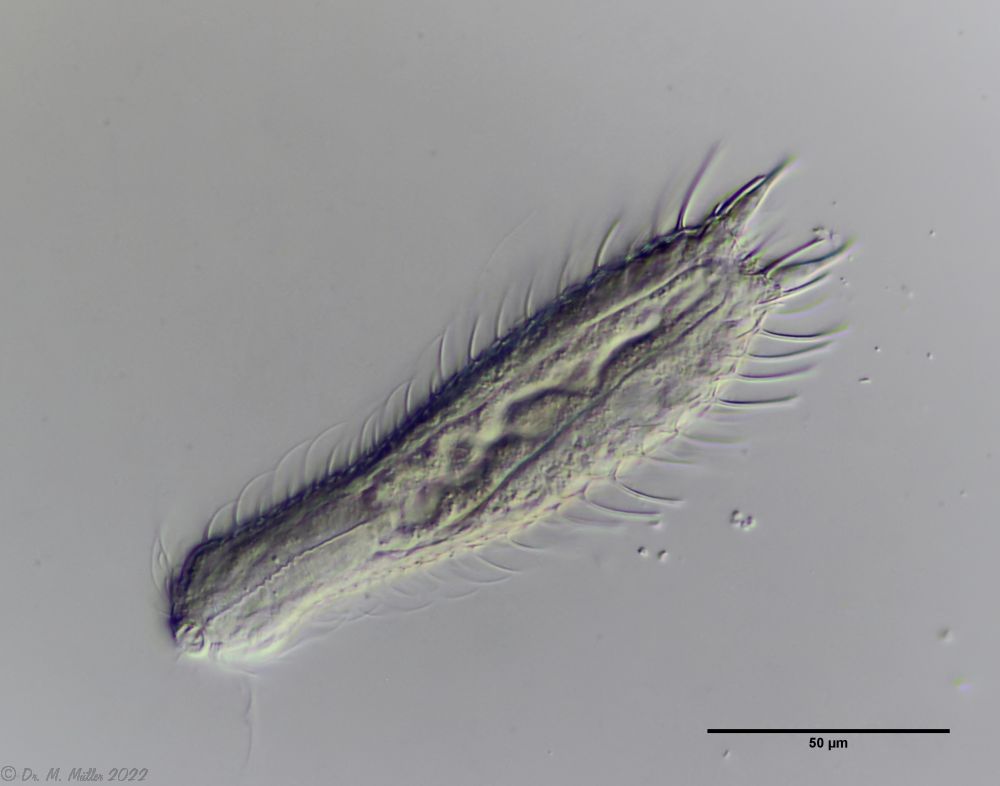 Ch. murrayi: cross section
Ch. murrayi: cross section
This is particularly noticeable when focusing on the spines on the back:
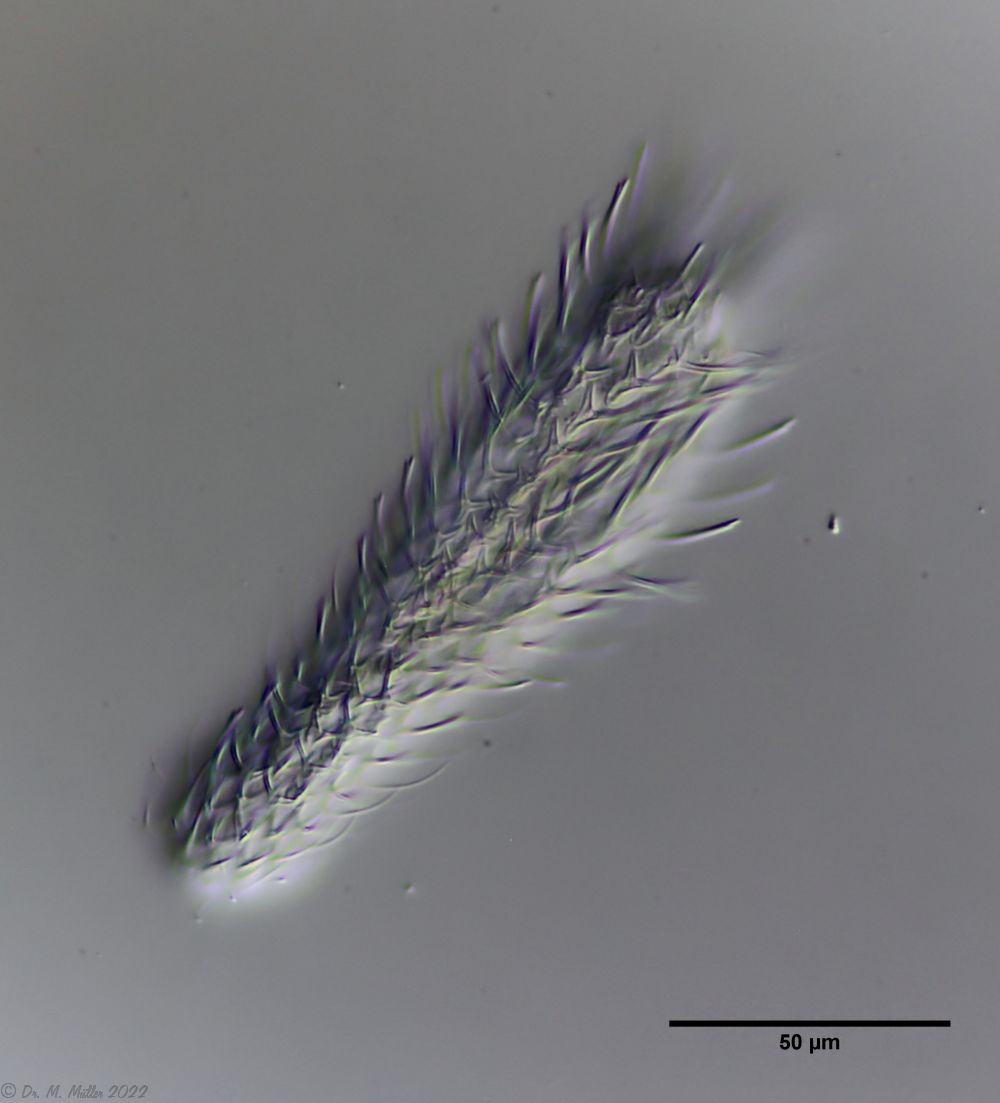 Ch. murrayi: dorsal
Ch. murrayi: dorsal
The approx. 20µm long spines have a lateral secondary spine near the main spine:
 Ch. murrayi: focus on the spine tips
Ch. murrayi: focus on the spine tips
The focus on the scales shows the typical three-lobed scale shape of this subgenus. In contrast to the findings in the literature, the entire head of the animals is also covered with long spines:
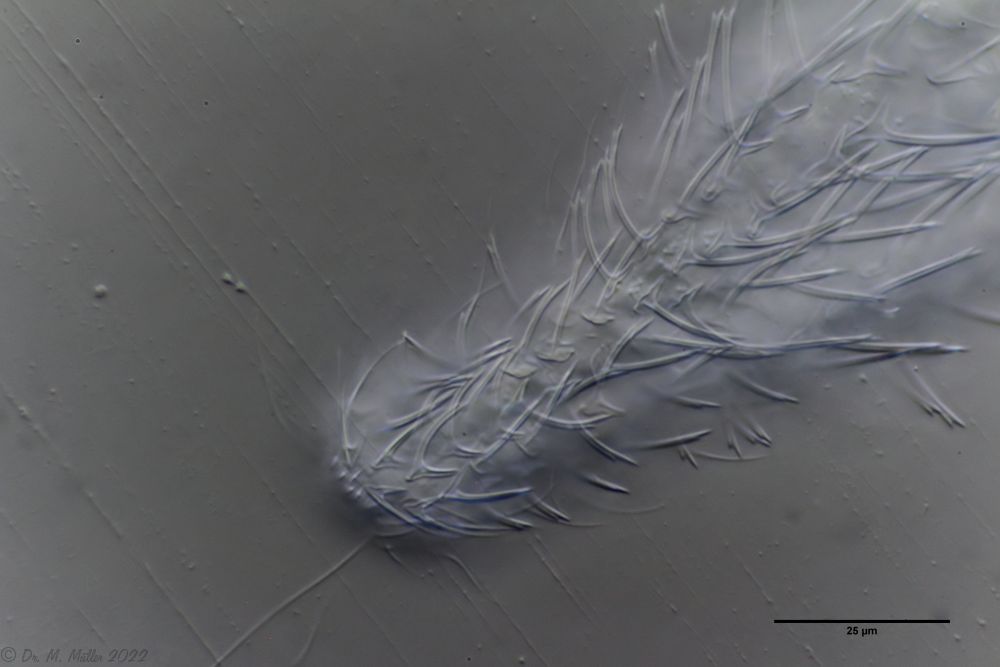 Ch. murrayi: dorsal scaling of the head / neck area
Ch. murrayi: dorsal scaling of the head / neck area
The spination is also clearly pronounced at the posterior end. Unlike many members of the subgenus Hystrocochaetonotus this species lacks the unspined dorsal keel plates:
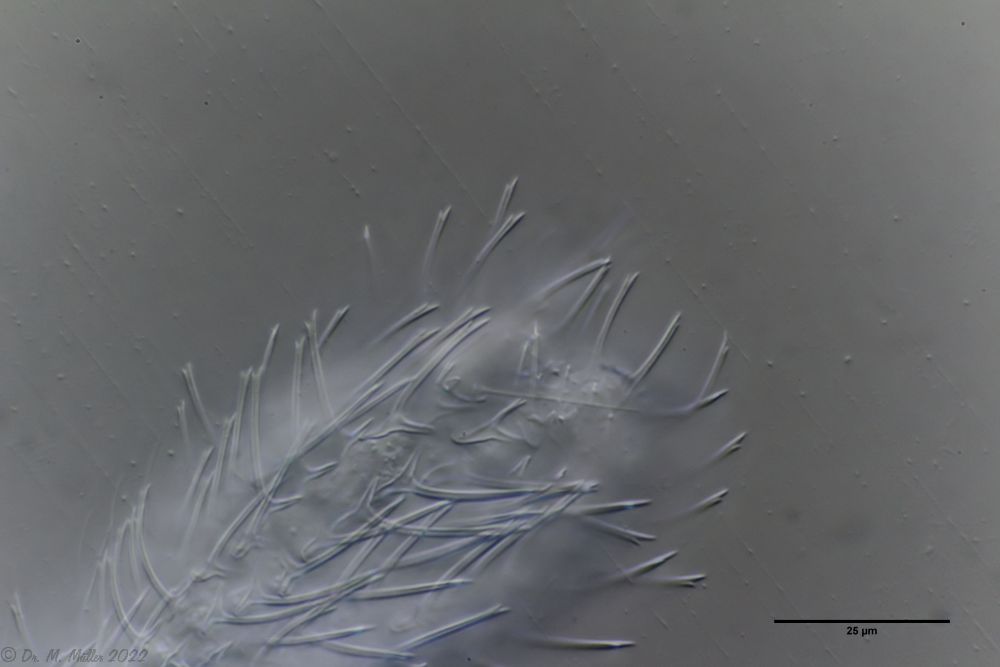 Ch. murrayi: dorsal scaling of the hind end
Ch. murrayi: dorsal scaling of the hind end
The ventral intermediate field bears 6 - 7 rows of small keel scales and is terminated by two spiny terminal plates.
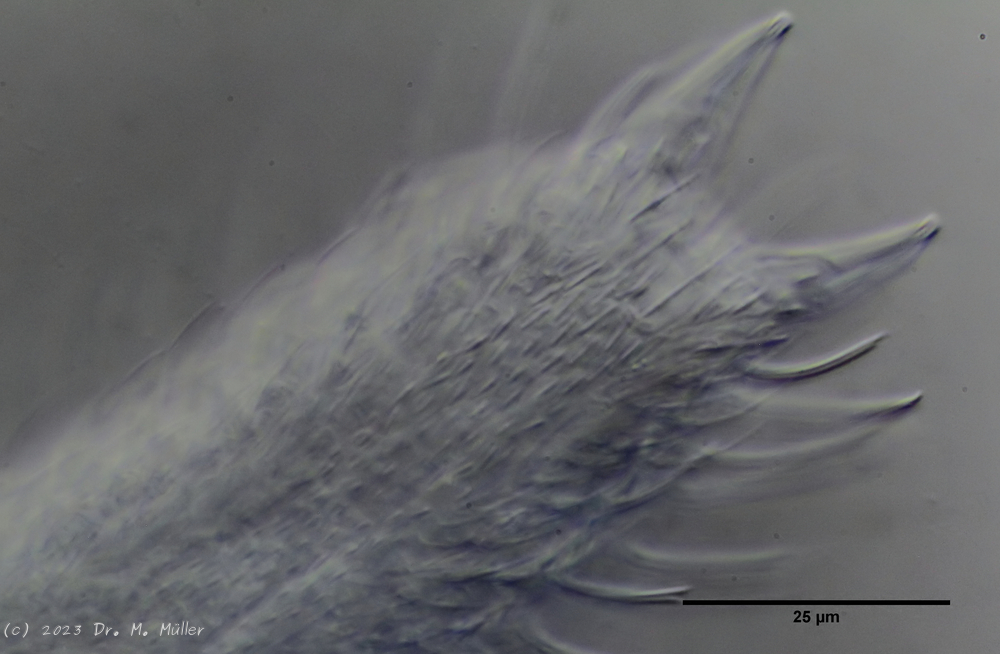 Ch. murray: Scales of the ventral intermediate field
Ch. murray: Scales of the ventral intermediate field